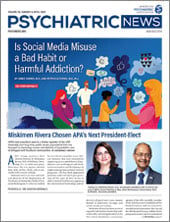Hypnosis-based therapy is employed in the management of several psychiatric conditions such as phobias and other anxieties, somatic disorders like fibromyalgia, and smoking cessation. While hypnotherapy can be very effective for some patients, its reach is limited as people inherently have differing levels of suggestibility; while about 20% of people can be hypnotized readily, 20% are basically not hypnotizable.
A clinical study in Nature Mental Health reported that transcranial magnetic stimulation (TMS) can temporarily increase how easily individuals can be hypnotized. Though this proof-of-concept study needs follow-up investigations, the findings are exciting in demonstrating that a trait believed to be stable across the lifespan can be modified.
Though people may be familiar with hypnosis as a stage act, its role in therapy does not involve placing someone in a trance, explained senior study author David Spiegel, M.D., who is the Willson Professor and associate chair of psychiatry at Stanford University School of Medicine. Rather, hypnotherapy mobilizes an individual toward a state of focused attention and heightened cognitive flexibility; together, these states of being can facilitate the goal of behavioral change.
“Hypnosis has commonalities with psychedelics, which are also promising adjuncts for psychotherapy,” said Spiegel. He told Psychiatric News that both approaches suppress the brain network that controls rumination thinking (for example, daydreaming and mind wandering), which inhibits many preconceived notions and facilitates trying out a new identity.
The seeds for this current study were planted several years back, when Spiegel’s team used brain imaging data to identify potential brain connections associated with hypnotizability. They found that readily hypnotizable people had stronger nerve connections between the dorsolateral prefrontal cortex (DLPFC) and the dorsal anterior cingulate cortex (dACC) than nonhypnotizable people. That two regions are relevant for hypnosis makes sense; the DLPFC controls decision-making and executive function while the dACC processes and filters external stimuli.
“We realized both these regions are salient targets of TMS,” said Spiegel, who decided to reach out to psychiatry colleague Nolan Williams, M.D., the director of the Stanford Brain Stimulation Lab and a pioneer in precision neurostimulation techniques. Together, their teams set out to see whether they could modulate the hypnosis response.
The Stanford team recruited 80 adults (aged 18 to 69, 94% female) with fibromyalgia, a chronic condition characterized by heightened pain response, fatigue, and cognitive problems. All participants were rated as being low to moderately hypnotizable according to the hypnotic induction profile (HIP), a brief test in which a therapist gives a standardized set of suggestions, such as having individuals roll their while closing them and raising their hand by making it feel lighter. Individuals had to score 8 or lower on the 0- to 10-point HIP scale to be eligible.
The participants were randomly allocated to receive one session of theta-burst stimulation, a rapid form of TBS that can be delivered in about 90 seconds, or sham stimulation. Like another TMS protocol developed by Williams known as
SAINT, each participant in this trial underwent an MRI scan to pinpoint the region in the DLPFC that had the strongest connection to the dACC. (SAINT stands for Stanford Accelerated Intelligent Neuromodulation Therapy.) The participants were then given another HIP assessment immediately after stimulation and again one hour later.
On average, the HIP scores of participants who received active TMS increased by about one point immediately after stimulation whereas scores among sham participants remained the same. The changes to HIP scores wore off after one hour.
Though the effects were modest and transient, Williams believes they are encouraging given this was a first attempt involving just one stimulation session; regular TMS therapy for depression typically requires numerous sessions spaced out over days or weeks to achieve any robust effects. He is planning to conduct additional tests to see whether the effects of TMS on hypnotizability can be extended in duration and/or augmented in power.
Williams acknowledged that this mechanistic study assessed only individuals’ hypnotizability index; the researchers did not provide any detailed hypnotherapy to see whether the fibromyalgia patients responded more robustly following TMS.
Williams and Spiegel are hoping to launch a clinically focused trial to explore whether TMS can boost the efficacy of hypnotherapy in people looking to quit smoking. TMS is being tested as a standalone therapy for smoking cessation, so it’s possible that combining it with hypnotherapy may provide a synergistic effect.
Spiegel believes that boosting hypnotizability may have broad applications. He told Psychiatric News that several modalities of psychotherapy, including cognitive-behavioral therapy, could be enhanced if people had more focus and were open to trying news ways of thinking.
This study was supported by an Innovation Award grant from the National Center for Complementary and Integrative Health. ■

